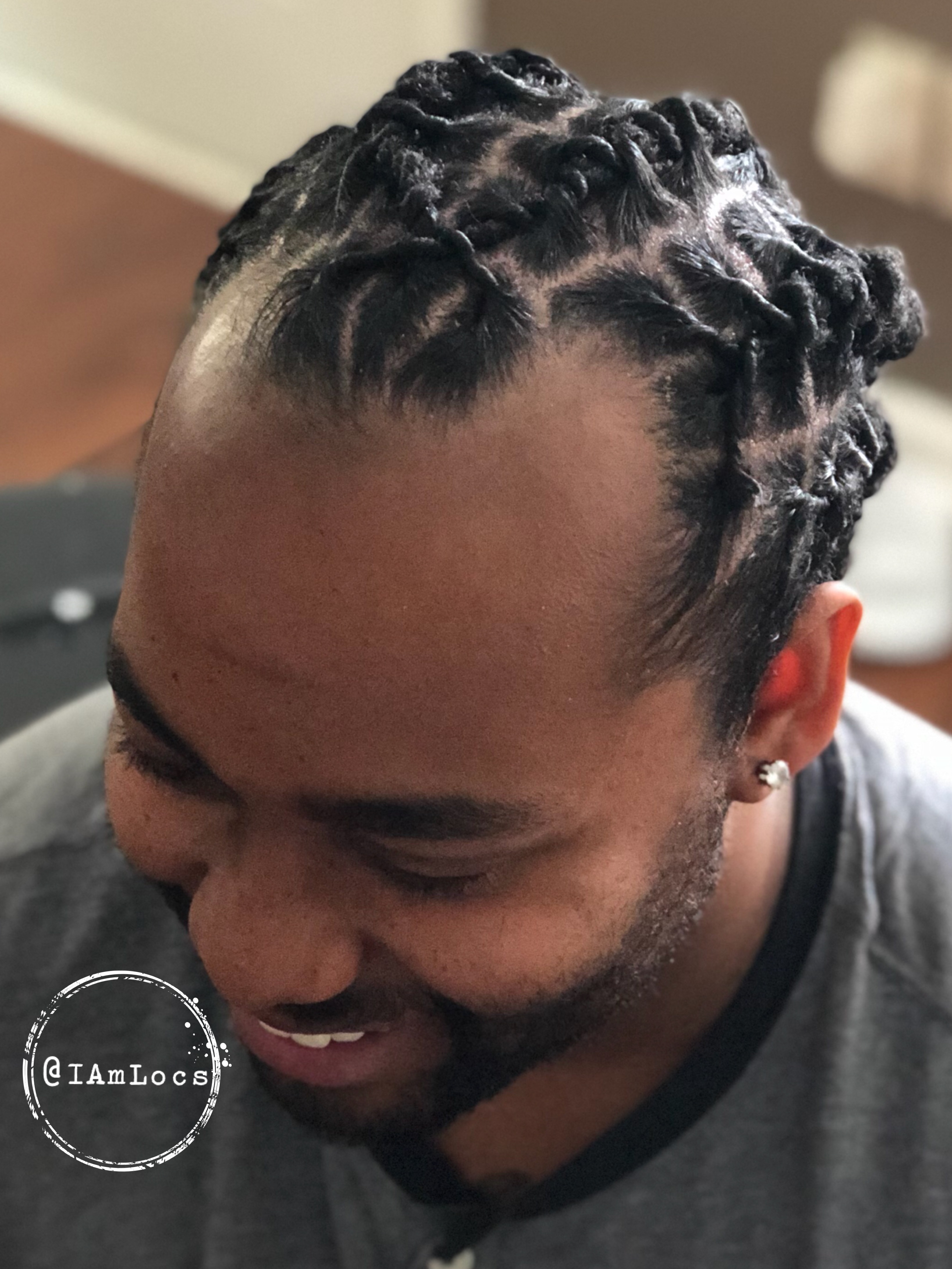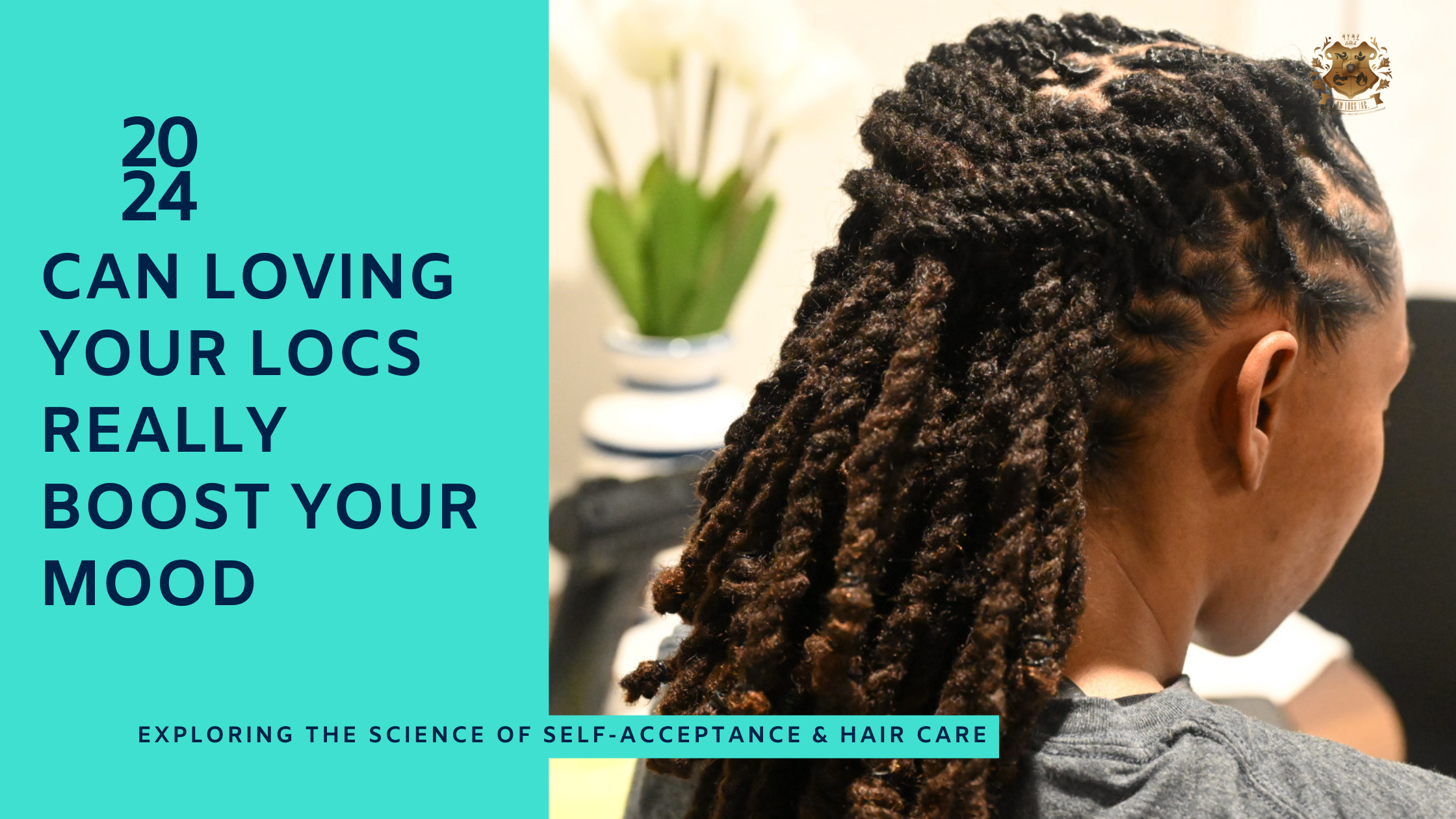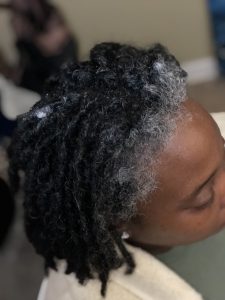Jump Ahead To
Your First Four Weeks of Locs : Stages of Loc Development
Your first four weeks begin a transition that will change you forever. The Bible makes mention of locs in the book of Numbers.
Numbers 6:5 “All the days of the vow of his separation there shall no razor come upon his head: until the days be fulfilled, which separates himself unto Yahuah, he shall be holy, and shall let the locks of the hair of his head grow.”
God speaks to Moses and directs him to say to the children of Israel. This is a message to God’s people as an offer for anyone to separate or remove themselves to a vow of Nazir.
What is the Vow of Nazir?
The Nazirite vow was taken by Hebrews that voluntarily separate themselves and five of themselves completely into God. The Hebrew word nazir means “to be separated or consecrated” This word and vow mean that you voluntarily desire to vow to separate yourself and make yourself holy to God.
Week 1:
Your loc start is a big deal. Week 1 after your loc-start is clarifying. It is the week that you see yourself differently and accept yourself. It is also the week that so many people begin asking you about your locs. They begin with questions like, how long have you had your locs? You should get used to this question because it is the most popular one to ask.
Covering Your Locs When You Sleep
Covering your locs when you sleep the first four weeks are crucial to the development of your locs. During the night this is the time that your initial twist could unravel with friction from your pillow.
Week 2:
Your twists will appear fresh and newly done this week as well. It is important during this time to consider your habit and diet as your locs are the tree trunk rings that tell the story of your self-care. Many times the issues that people experience in their hair are merely a manifestation of our self-care that we can see.
You enter into a new realm and now all of a sudden everyone wants to talk about your locs and how long you have had them or you find yourself asking everyone you find with locs, what is your Loc story.
From this time forward you fantasize about how glorious and beautiful your locs are going to be.
Week 3:
Locs are still considered to be in the first stage, however, you may witness a dullness in your hair. This dullness is a normal part of the process and it means that the transition has begun. The closer you get to the fourth week the more you will see your locs developing areas of knitting and tangling. This is normal, in fact, deserves as this is you Segway into stage two of Loc development.
How Long will budding take?
Budding begins around this week and continues until you are in stage 3 of Loc development; you begin stage 3 once the budding is complete.
Week 4:
This week you may be saying it’s time for a shampoo. By this time most people that keep up regular activity may enjoy some water touching their scalp. Take note that it is important to massage your scalp.
How often should I massage my scalp for healthy locs to grow?
Massaging your scalp twice a week is ideal for hair growth. Movement around the hair follicle prompts the release of oil from the root down your hair shaft.
Month 1: Loc Development

stages of loc development: Stage 1
Stage 1: Starter locs/Baby Loc stage
Characteristics of Baby Locs
- Baby locs are shiny and curls are defined in the hair texture
- Baby locs are small or slim, however, this does not indicate the final circumference the Loc will be once it matures.
- Locs in the baby stage are soft, light, and fragile. They hold absolutely no weight. People are often surprised at the end result of the locs once they have witnessed the beginning stage.
- Locs in the baby stage should not be disturbed for as much as possible. This will keep your parts and locs intact until the have an opportunity to form.
What is the reason you are instructed not to clean your hair?
At your loc-start, you begin specialized training. This training requires the time it takes your hair to dry completely in position. This will give you the best possible results when beginning the starter lock process. Wetting your hair rather it is from sweat, showering, or cleaning restarts that process. We require the entire month for this loc training to occur before we move on to the next stage. When the cleaning is done understand that a starter loc reset will be required, which prolongs the process.
How Often Should I Get My Starter locs Maintenance?
The key to loc maintenance is consistency. The locs will grow long and in that length just like the tree trunk tells its age and lifetime so do your locs! They show how often they were serviced and if you skipped a time. They will even tell of a time when you were having a difficult or stressful period in your life. I have had clients come every two weeks for over a year and appointments are definitely catered to each person’s specific loc care needs. The hair growth cycle is specific to each person including diet rest and stress all play a role in the growth pattern and cell turnover. Most people decide that they want loc maintenance every 4-6 weeks.
Blissful Month 2: Loc Development:
They still look fairly new. Most are still at stage 1 with the onset of stage 2 loc development. Once that knotting occurs at the root, the transition is taking place. This is the time that you can clean your locs. The reason it is okay is if you feel the first bud where your new growth and your loc meet, is because this is how you can ensure the parting is in place. That’s not to say you don’t have to be careful with your locs so as to clean but not to disturb them because you are technically still in stage 1 of the loc development process.
Am I Ready For My First Loc Maintenance?
Your first retwist can occur after the first bud appears. Waiting until this time ensures your loc parting pattern is secure. Carefully clean the scalp without disturbing the locs. Do your research to understand the loc maturing process. Your first 6 months does not have to be difficult. The difficulty occurs with not understanding of the maturing process.
What are the Stages of Loc Development?
There are 5 Stages of Loc/Dreadlock Development
 stage 1: Loc start
stage 1: Loc start
Stage 1: Loc Start
Your loc start can begin a few ways. Comb coils, two Strand Twists, or interlocking. People decide on a starter loc method based on their hair profile(texture, thickness, and density). It is discouraging for some at this stage patience is the key. Your hair has to learn how to be inside of the loc (dreadlock). This stage only lasts for 4-6 weeks and then you’re off to the budding stage.
Loc Stage 2: Baby locs/Budding
The budding loc stage varies for different hair profiles but lasts for the first 4-16 weeks. During this stage, your Locs will begin to bud (tangle or clump into knots.) The budding will begin at the root and after about 6 weeks you should be able to feel new growth and budding, where the root meets the loc (end of the new growth.) You may notice that your locs are fuzzy but there is a definite shape to them at this point.
Loc Stage 3: Teenage Stage
A characteristic of the teenage loc stage is the locs are very light in weight (as the budding continues throughout the loc). This lightweight in the teenage loc contributes largely to the unruly stage people dread from the beginning to the end. This stage lasts for 8-24 Months
Loc Stage 4: Mature Loc
Your locs have began to mature and they are heavier. As the loc begins to bud process is close to completion. You now have budding through the loc and it feels firm and can consistently hold its diameter. People notice characteristics of this stage closer to the end of their 1st year. Congratulations are in order for you at this stage. Once that weight gets into your locs they hang lower and begin to go through the dropping process. During this time you notice the length in your locs increase. Everyone has now matured and mastered the art of working together! The ends of your locs are the last section that goes through the maturing process but this is where your antenna form.
Loc Stage 5: Beyond Mature
After year 2 all your locs will grow to the same length. Another indication that your locs are beyond mature is the feel of the loc. It is firm throughout and contains no frizz. This stage proves to be the magic seal for your loc ends relaying that your antenna has finally formed.
These first 6 months after you start your locs you will decide on your loc start method. The loc start method is totally up to you. Your part pattern will always be visible and is difficult to change once your locs have reached the stage of maturity. See also, Loc Start Parting Methods Explained.
Month number 2 Continued…
In your first 6 months, you will begin to transition into the budding stage. During this time you are now ready for your 1st loc retwist or loc maintenance. Once the budding has started you can be somewhat confident that wetting your locs wet for the first time will not be a complete reset. Do not worry if all of your locs have not started to bud, they will if you stick with it long enough. An easy way to tell if your locs have started the budding process is to locate a loc on your head and start to feel the root and then progress further down the loc. You should run into a ball or know of some sort and that is what you are looking for. That’s a great thing for you to find letting you know your hair is learning exactly what to do.
Month 3: Loc Development: Neat w/ Maintenance Frizz Noticeable
This month is pretty much a continuation of the last month and you may have gotten a second retwist by now but by this time people have resolved to wait it out. It puts so much peace into your life once you accept the fact that the process has a gestation time. You will notice that your root may look twisted and brand new but your ends are puffy and frizzy and that is understandable because as you are being Maintenance or retwisted that particular appointment is a focus on training your new growth to grow into the loc and your locs will continue to be frizzy until it gets beyond the teenage stage of loc development. There are some ways that you can contain your ends during this time without disrupting the process, however, it is still part of the process so accept the frizziness.
Month 4: Everything Begins to Become Routine
Month 5 and 6: Loc Development
Final budding continues as your hair learns to grow into the loc. The good news is your length should have increased by 2-3 inches. Lock styles are now a possibility for you. Styles are amazing now that frizz is under control, for the first time in a year. The sense of accomplishment you feel can not be described. Your first 6 months of locs are going to point your attention inward, this time fosters the lesson of acceptance. Your locs are literally making themselves invincible by banding together and forming the antenna to better serve your higher purpose.




3 Responses
I am glad to be one of several visitors on this great internet site (:, appreciate it for putting up.
Me too I’m glad you are as well!
[…] Welcome to Your Loc Journey […]